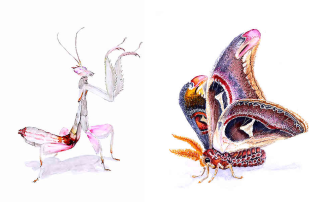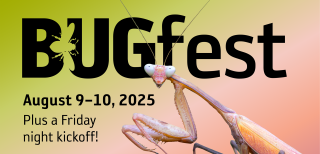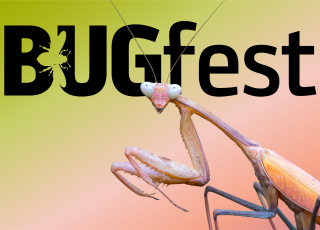BugFest 2025 — Sunday
Event Details
Canyon
Free with museum admission
Flutter on up to BugFest — a BIG celebration of Utah’s tiniest residents. On August 9 and 10, NHMU will be buzzing with fun, giving bug lovers of all ages the opportunity to explore Utah’s incredible array of insects and the plants they pollinate. This year, we’re shining the spotlight on one of the coolest bugs around: the praying mantis! These incredible invertebrates are sneaky, speedy, and full of surprises! Discover what makes them so awesome at a weekend-long celebration of the busy bees and bizarre bugs that call Utah home.
The festival is included with regular Museum admission, which is free for Museum Members and University of Utah faculty, staff, and students.
Workshops Worth Buzzing About
View and register for Sunday's artisan workshops below — seats are limited and expected to fill quickly. Please note that this year, when you register for a workshop, you'll be granted museum admission at no extra cost!

Heath Ogden Art
Insects in Watercolor | Heath Ogden
*To accommodate a high demand, this workshop is being offered in two separate sessions.*
12:30 p.m. - 1:30 p.m. | Register Here
2:30 p.m. - 3:30 p.m. | Register Here
Unwind with a watercolor workshop celebrating the beauty and diversity of insects through a relaxing, hands-on painting lesson! In addition to completing your own watercolor masterpiece, you will also take home a print of one of Dr. Ogden's pieces and an instruction sheet for how to do more insect watercolor artwork at home.
BugFest Activities Include:
Expert Speakers: Learn about the big role tiny insects play across ecosystems.
Face Painting and Photos: Enjoy free face painting and fun photo ops!
Amazing Specimen Displays: Get an up close view of Utah’s incredible bugs and plants.
iNaturalist Fun: Explore and learn about nature by using the iNaturalist app.
The Famous BugBar: Try delicious and unique insect treats!
Sensory-Friendly Area: Reset your mind in a relaxing, quiet space.
Special Exhibit Access: Tour Mysteries of the Ice Ages, which looks back at plant and animal life from thousands of years ago.


